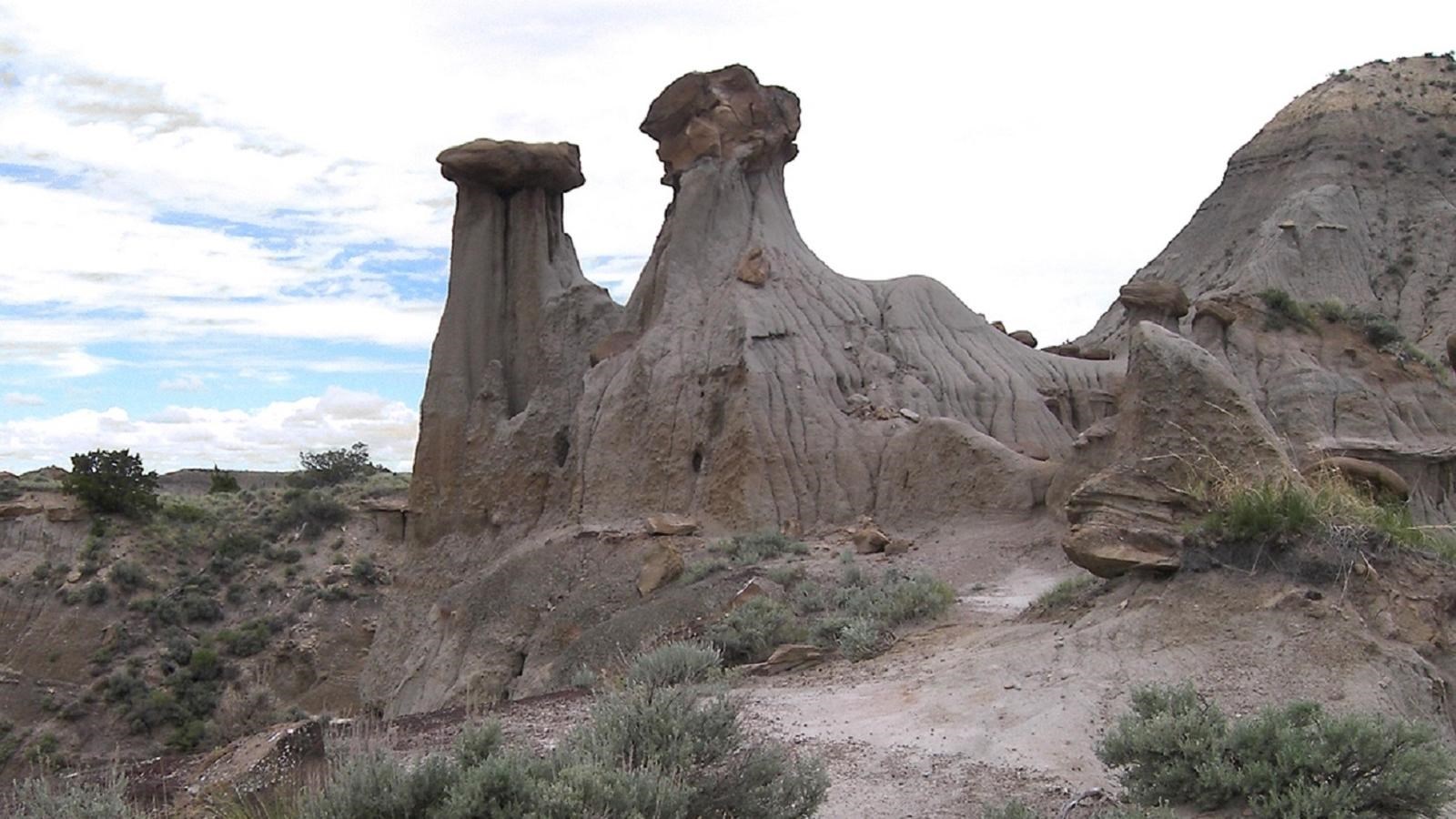Last updated: June 8, 2021
Place
Makoshika State Park

"File:Makoshika rocks.jpg" by Larry D. Moore is licensed under CC BY-SA 3.0
Accessible Sites, Fire Pit, Firewood For Sale/Available, Gifts/Souvenirs/Books, Grill, Historical/Interpretive Information/Exhibits, Information, Information - Maps Available, Information - Ranger/Staff Member Present, Information Kiosk/Bulletin Board, Parking - Auto, Parking - Bus/RV, Picnic Shelter/Pavilion, Picnic Table, Playground, Restroom, Restroom - Accessible, Scenic View/Photo Spot, Toilet - Flush, Toilet - Vault/Composting, Trailhead, Trash/Litter Receptacles, Water - Drinking/Potable, Wheelchair Accessible
Lewis and Clark NHT Visitor Centers and Museums
This map shows a range of features associated with the Lewis and Clark National Historic Trail, which commemorates the 1803-1806 Lewis and Clark Expedition. The trail spans a large portion of the North American continent, from the Ohio River in Pittsburgh, Pennsylvania, to the mouth of the Columbia River in Oregon and Washington. The trail is comprised of the historic route of the Lewis and Clark Expedition, an auto tour route, high potential historic sites (shown in black), visitor centers (shown in orange), and pivotal places (shown in green). These features can be selected on the map to reveal additional information. Also shown is a base map displaying state boundaries, cities, rivers, and highways. The map conveys how a significant area of the North American continent was traversed by the Lewis and Clark Expedition and indicates the many places where visitors can learn about their journey and experience the landscape through which they traveled.
Makoshika State Park is Montana’s largest state park, located just outside Glendive, along the Yellowstone River. It is a park of outstanding natural beauty, referenced in William Clark’s journal as the “birnt hills” from when Clark and his party camped in what is now the Glendive area on their return journey down the Yellowstone.
Makoshika is a sprawling mass of badlands layered with color and awash in classic badland formations like caprocks, hoodoos and natural bridges. The habitat is almost entirely rugged badlands with stands of juniper and pine, with some open native prairie at the “top” of the park. Large mammals like mule deer and mountain lions (though they are rarely, if ever seen) inhabit the park. Native birds such as mountain bluebirds and turkey vultures return to Makoshika each year to breed. Many other bird species, including bald and golden eagles, can also be seen. Besides its outstanding natural beauty,
Makoshika is also a world-class fossil bed and a place of incredible scientific importance, especially to paleontologists. The badlands of Makoshika are part of the celebrated Hell Creek Formation, famed worldwide as one of the richest caches of dinosaur fossils on the planet. Dinosaur fossils are routinely recovered from Makoshika, including the most popular dinosaurs like triceratops and Tyrannosaurus Rex. Several fossils of particular importance to science have been recovered from Makoshika.
Dig expeditions from major scientific institutions such as the Museum of the Rockies, the Burpee Museum, the University of Wisconsin, Notre Dame University, and others come to the park every summer to search for new fossil finds.
